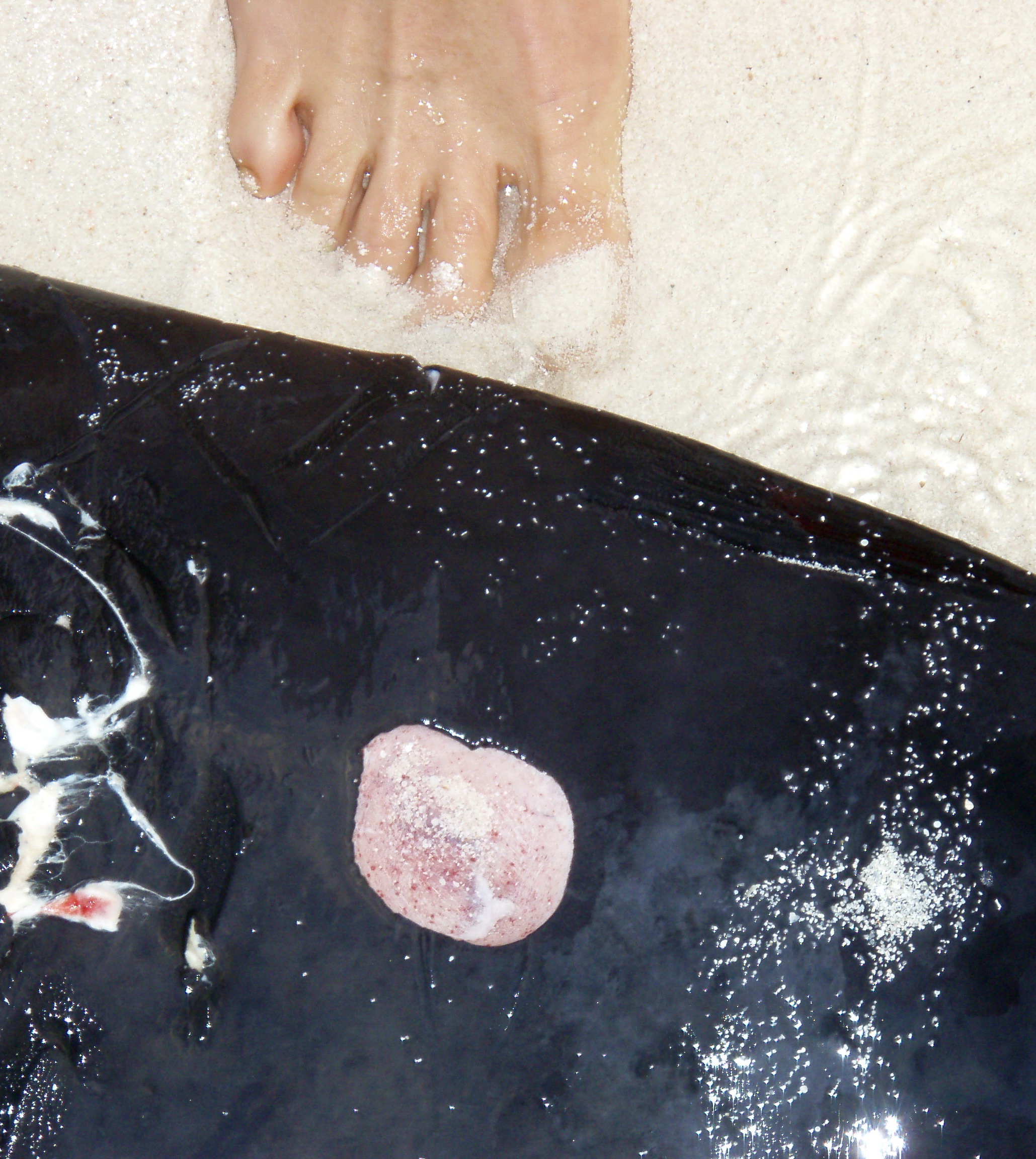Published in the Ocean Watch column, Honolulu Star-Advertiser © Susan Scott
July 18, 2011
Areport of a swimmer bitten by a cookie-cutter shark, published this month by a University of Florida researcher, sounded familiar. As I read further, I discovered why. That wasn’t Florida’s shark. It was ours.
 Photo by Susan Scott
Photo by Susan Scott
This pygmy sperm whale carcass, found on a beach at Midway Atoll,
reveals the cookie-cutter shark’s signature chomp.
The reason the publication of a Hawaii shark incident came from Florida is because the International Shark Attack File is housed at the Florida Museum of Natural History on the University of Florida campus in Gainesville. What seemed odd to me, though, was the first sentence of the report, intended for the media: “A new study co-authored by University of Florida researchers provides details on the first cookiecutter shark attack on a live human, a concern as warm summer waters attract more people to the ocean.”
The implication is these sharks are a danger to recreational swimmers. Not so.
Here’s what happened. In 2009 a cookie-cutter shark bit the leg of Maui resident Mike Spalding, who was attempting to swim the 32-mile Alenuihaha Channel between the Big Island and Maui. The bite occurred at night when Spalding was about 11 miles offshore.
This first-ever strike by this species was a surprise to researchers (and certainly to Spalding), but given the time and place, the bite was routine. The cookie-cutter shark was doing what it does every night.
During the day these small fish (20 inches maximum) swim to depths of 3,000 feet and below. At night they rise to the surface, using their own light-making organs to blend in with other surfacing light-makers, such as lantern fish and squid. When a tuna, dolphin or whale moves in on the glowing prey, the camouflaged shark strikes. Its aim is not to kill, but to take a bite.
The little shark eats its pupu with flair. After latching onto its target with fleshy lips, the shark sinks in a circle of teeth and twists to cut out, well, a meat cookie.
Cookie-cutter sharks bite everything they can. We know this from the distinct scars they leave, about the size and shape of an Oreo. Because the sharks are strictly tropical and subtropical, the wounds found on whales gives researchers clues as to when and where the mammal traveled.
 Hawaiian monk seal with cookie cutter shark bite
Hawaiian monk seal with cookie cutter shark bite
and her pup near Mokuleia, Oahu, Hawaii. Courtesy Joanne Tabor
Mike Spalding recovered from his bite and in early March again attempted the Alenuihaha Channel swim. This time he kept his nighttime hours to a minimum and had no run-ins with cookie-cutter sharks, succeeding in his crossing.
After reading the informative Shark Attack File, I am sure giving swimmers another shark species to fear was not the intention of the press release’s authors. Unfortunately, some news sources ran with that cautionary lead sentence, then asked,”The new Jaws?” and surmised, “perhaps it has developed a taste for humans.”
But don’t worry. Cookie-cutter sharks might not be our friends, but they are not suddenly out to get us. Nor are they a concern to summer swimmers.
Unless, that is, you’re in the tropics, in water 3,000 feet deep.